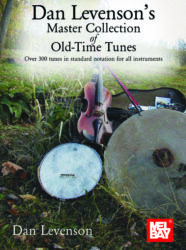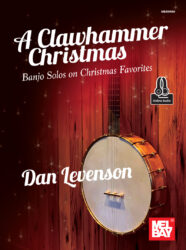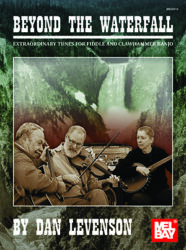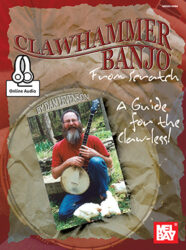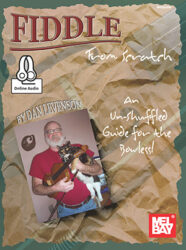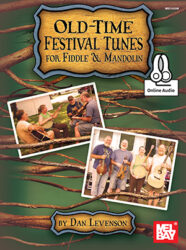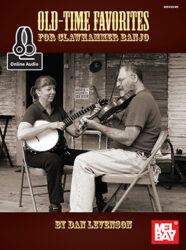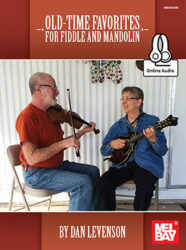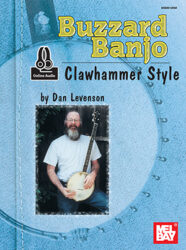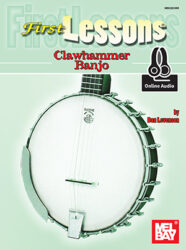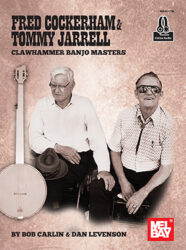By Dan Levenson
This article was originally written in back in 2001 or 2 and has appeared in various forms since then. It is also Appendix 1 in both Clawhammer Banjo From Scratch (2003 – Mel Bay 20190) and Fiddle From Scratch (2013 – Mel Bay 22256) – my basic instruction books for those instruments. It is still a popular article and I have published it here in an updated form by popular request. No, it isn’t the end of the conversation, merely a beginning.
An often-discussed topic tends to be jam sessions. That includes how to jam, when to jam, how to start a jam, what is a jam and how do I deal with going to a jam as well as other topics relating to jam sessions. They come under the heading of Jam Etiquette. OR: How to Play Nice with others.
Festival season is a great time to look forward to. It’s the time of year when I get to see, hear and play with some of my favorite musicians. Many of these folks are accessible and accommodating musicians whom I’ve come to know and respect. Some are less so, and that goes for the professional as well as the non-professional pickers. Several years ago a good fiddler friend, Claudia, came east to go to some festivals with me. It was truly a pleasure to have her with visit and travel for more than a week. As we played and traveled, we talked and talked about the various music scenes in our respective areas and about everything pertaining to life, liberty and the pursuit of Old Time Music. As you might guess the issue of jam etiquette came up. Begin a discussion about jam sessions and you bring up one of the most emotional subjects there is for musicians. Each of us had our stories of the jam session from hell as well as the heavenly sessions we have been a part of.
The truth of the matter is that not all jams are created equal and everyone at a given session is not of equal ability or talent. This is what makes a jam session a jam session. There are many dynamics at work, not the least of which are personalities and history of the players (both individually and collectively) and the ability to evaluate the skill level of the session as it is forming or during its course. Finally, it includes the prospective jammer’s ability to honestly and critically determine their own ability in order to ascertain whether to join the jam, observe (listen, watch and maybe even tape) the jam, or perhaps find another jam more in line with one’s ability and/or style of music played.
There are many legitimate concerns as to what and why jam sessions are what they are. We need an exchange of information in order for all of the players and listeners to have a positive jam session experience. After all, we want all musicians (beginners as well as more accomplished players) to be able to join in and take advantage of jam session opportunities. Likewise, all players need to advance and still feel that they have a reason to continue attending the many festivals and jam sessions that exist. Some jam sessions are pretty basic while others have evolved to higher skill levels utilizing more and more keys, and more difficult tunes.
So, what is a jam session and why is it so important? A jam session can be loosely defined as 2 or more people informally playing tunes together and (hopefully) having fun doing so. The key to these sessions is that a) they’re fun, and b) they’re informal. The importance of these sessions is that they give everybody at all levels a chance to play with others and improve one’s ability. What jam sessions are NOT is a place to show off and be rude either as a player or an observer. HOWEVER, NOT ALL JAM SESSIONS ARE CREATED EQUAL! No session is right for everyone nor is everyone right for all sessions. Here are some stories and situations, which I hope, will help illustrate this premise and allow you all to get more from the sessions in the future.
Claudia’s story is pretty typical of a multi-dimensional lack of Jam Etiquette. The scenario goes something like this. Claudia finds herself in the ideal jam of a lifetime. Famous musician fiddle player, great guitar player and her fine fiddling in a small circle playing great music together. The world is lost to view by all involved. Claudia thinks to herself, “Finally, acceptance and success with one of the most famous and picky players in the country!” All is well with the world UNTIL a LOUD and overassertive fiddler enters said session mid – tune. Original trio tries to get closer, tune ends, famous musician does a bend and stretch, says “Bye” and session ends after only one tune. Multiple breaches of etiquette have occurred and joy has quickly become disappointment.
Let’s look at what happened here. First, note that there’s no clear “blame” in these situations. Usually triggered by some event, it takes more than one problem for an EB (etiquette breach) to end a session. In this case the first EB was a multiple EB with the entrance of a new musician to an existing session mid-tune and without invitation (verbal or otherwise). A second EB occurs when the intruder responds to by getting louder as original group tries to get closer and send a message. The third and fatal EB occurs when the famous musician leaves without explanation (perhaps unnecessary) or attempt to continue the session. True, the interloper triggered the events that ended the session but, the famous one did nothing to try to save it either.
You might ask what could have been done in this case to save the session? Well, a couple of things come to mind. In the first place, those wishing to have a truly “closed session” (one where all other musicians are not welcome) should go to a private space. I know that’s not always possible and these sessions can have a spontaneity which simply does not allow for the foresight to plan such an escape. In this case though, it was at a private party (I assume by invitation only). There seemed no reason to find a quiet corner. When the extra person tried to join in, the group could have gotten so tight together as to not allow space for another. Barring good sense on the part of the intruder by joining without invitation, the verbal request could have been made to her that she please find another session. Blunt perhaps, but this person obviously wasn’t into reading subtlety.
This was just one of the many stories of good jams gone bad which Claudia and I discussed over the week. There were even a few instances of our own sessions being disrupted by the anxious but unaware jam buster. In one case at the Beaver Valley festival, it worked in reverse. Having just come from the Dance and wanting to play our own Old Time Music we discovered a great song session going on at our camp. Bryan Bowers and Annie Trimble were there along with a good number of others exchanging songs, great music and good times. Not wanting to participate in this type of session did not justify us breaking up a going session with another type of music. So, we went into our camper where we had a quiet session of our own. Being inside we were able to control the type of music and the number of participants. To be sure we got some folks who didn’t understand why they were not invited in or why we didn’t want to join the others. Suffice it to say, our sense of Jam Etiquette allowed each of us to have a good time without intruding on another’s space or fun.
So what are some guidelines for jam etiquette? First and foremost in any jam situation be sure you are welcome. The easiest way is to wait for an invitation to play from someone in the session. This can come in many ways from a straight forward “get your out and join us” to a physical widening of the circle in your direction to let you in. DON’T just assume you are welcome and take an empty chair. It might be possible to ask if a seat is taken. If you wish, you can even ask if you may join the session. Don’t take the seat of someone who gets up without asking either – they may be coming back. If an invitation is not forthcoming then please be content to listen, move on to another session, or start a session of your own.
If you are invited to join, several things are important. You must be the judge of your ability. Be honest. If you are not sure of your ability compared to that of the session, try a few quiet tunes from just outside the circle before settling in. Don’t be afraid to hold back. You may be better than you think and if so, you’ll probably be encouraged to get in closer. (You can guess what will happen in the opposite case.) Remember to be gracious to your host session. You were invited to JOIN not control the session. Allow time to understand the dynamics of the session before picking tunes or style. Don’t try to change the style of music played either. If it’s an old time session, Irish tunes may NOT be welcome and visa – versa. Good musicians in good sessions will be as accommodating to you as you are to them. It won’t be long till you are asked to pick a tune or show them how you play a tune and treated, as J.P. Fraley told us, “almost like kin.”
A few more items are important when you join the session of your dreams. TUNING – please be in tune when you start. If you are not sure then wait for the end of the current tune and ask for a note to tune to.
ELECTRONIC TUNERS ARE NOT ALWAYS CORRECT, some instruments such as the hammer dulcimer or Autoharp® are impractical to retune without a lot of time. Other instruments such as harmonica or concertina are un-tunable on the spot or have been tuned to an older calibration of “A.” This is especially true of reed and wind instruments of the 19th century. These instruments, once in tune with themselves, are then used as the “tuner” for the session. In other words, you tune to them. Session drift also occurs during a session. This is due mostly to the instruments acclimating to the sun, shade, or humidity. These conditions cause the wood in the instruments to change in size enough to cause variation in pitch. Over the course of a session, the players adjust their tuning relative to each other so, even if they started their session at a perfect A=440 pitch, it doesn’t take long to get as much as a full ½ step sharp or flat. Sometimes pitch is not “accurate” due to whim or because everyone just agreed to tune to “x” instrument without concern to concert pitch. Remember, A – 440 is barely over 100 years old. In some cases now it has gone up again recently to A=444 (in Europe I’ve been told). It is a severe EB to ask a dozen or so other people to tune to you because you believe you have what you believe to be tuned to the the correct “A.” Most people can guess what will happen to such a bold individual. (Well, there’s always solo work.) And yes, I has happened in a session I have played in more than once, most notably at the Mt. Airy festival one year. There were 17 of us in the session at the time. We stayed in “our” tuning, the other fellow moved on after being asked (by another brave member) if he was the “tuning police”.
Just because you know someone in a session does not mean you will be asked to join. Friends are friends but, when that chance to play with some people you only see once a year or less comes up, you may find a deaf ear from the session. It is an EB to join this session without an invitation and MAY BE even with one. No easy choice here. Friends want to be nice and may feel uncomfortable about not asking you to play. Here it is up to you to be sensitive enough to judge. A few guidelines though: one fiddle is usually enough for any small session; two might be welcome; so if you are carrying what would be a third…
What is a body to do when one wants to play, play, play! First try to recognize the difference between a closed and an open session. In some cases this is easy. If a room has a closed door and music is coming from it, it is probably a closed session. You may want to peek in and check it out, but don’t expect an invitation to play. She same goes for the stalls at some of the festivals (ie. the animal pens at the Mt. Airy festival). These are like private rooms. If the door is closed, the sign should be clear. Where there is no door, observe the proximity of the players. If they seem to be circled and close together then it is probably a closed session and should not be interrupted. If you are standing there with instrument and would be welcome, you will be invited.
Open sessions on the other hand are just that. People standing or sitting around haphazardly in a loose group. Sessions at music stores or well advertised sessions are also usually open. You may also see several layers to the circle like an onion. These layers are a form of etiquette in and of themselves as people usually start at the outer circle and then based upon skill, familiarity, and INVITATION move further into the layers until they are part of the “inner circle” themselves. The outer layers are welcome and usually comprised of newer musicians. A lot of learning goes on there thanks to the more solid lead of the core circle.
A more recent development, which I’ve noticed lately, is the “slow jam” session. This session is usually mostly beginners and everyone is welcome. Many times there are one or two experienced musicians in this group. They are willing and able to play the more common tunes as slow as possible in order to let everyone feel comfortable playing. There is no pressure here to perform. No one is going to be critical of your style. Some instruments may not be in perfect tune, but all will be having a good time. Be careful here NOT to assume that the tunes are being played as they were intended. I’m not sure at the moment how I feel about the “slow jam,” and it really bothered me when the reports of a slow jam at a recent banjo gathering “were not slow enough.” Check them out but remember they are NOT indicative of how most of the old time world plays the tunes. If you never play with those above your skill, it will be harder to advance beyond it. They may indeed be a good place to get your feet wet but you will NOT be hearing the tunes as they were meant to sound.
As of this writing, I have also recently started what I call “Jam Workshops” where we may start a tune off phrase by phrase – even demonstrating then teaching the tune to folks who never heard it – but then up the speed to at least a moderate pace.
Experienced players take note. It is an EB on your part to write these more basic types of sessions off. Your input will help these new players become better musicians and you can still learn some things yourself. Everybody benefits in the learning process and the new musicians don’t feel as isolated from the experienced musicians. They will also be less likely to push into your experienced jam if they have somewhere to play, too. Remember, you had to learn also, and it didn’t take that long to get to be able to play in the better sessions. A musical act of kindness now will be remembered almost as long as an elitist rebuff when that now new player is in the hot session you want to join another day. (What goes around comes around.)
This is probably the best place to deal with taping etiquette as well. In most sessions no one objects to being recorded. It is in fact quite a rush to feel that you are good enough to have someone want to record you HOWEVER, it is always polite to ask. (Not while the playing is actually going on, though.) In turn, if someone else is recording, don’t sit down in front of their mic and don’t talk where the mic can pick it up. At the end of a tune you may want to know the name of it or you may want to know who is playing. If you wait till the end of a tune to ask your questions, you will probably receive polite answers. Don’t ramble on though about the tunes, or other extraneous information. These people want to play and at that moment you are their guest.
Recently, video recording has become very popular and can indeed be a valuable learning tool. But, many folks are concerned that they will show up on some Internet site and are quite against it. You can really cause a session to just end by turning one of those on, so PLEASE be sensitive to others by asking and honoring their request to not be video recorded.
Bottom line? Mutual respect is what this comes down to in the long run. We all want to play. You respect my session and I’ll respect yours. Everybody can come away feeling good with the use of just a little common sense. Courtesy is the rule and judgment is the key. I know that when I had some closed session time to play tunes with Claudia uninterrupted, I was much more willing and able to play with others in a more open environment later.
Remember, experienced players are just as frustrated by not being able to play the tunes they ARE capable of playing without someone of a much lower skill level barging loudly into their jam, out of tune or rhythm, and totally insensitive about instruments in a fixed tuning or ones that have to retune to play certain keys.
No one is served by allowing any player to believe that they should be welcome in any or every jam session. In fact, if one wants to ever advance in these areas (technique, ability, and etc.) they will find it desirable and in fact necessary to spend much of their time LISTENING and not playing at many jam sessions of players better than themselves. Failure to recognize this fact and to follow this procedure will result in always playing the same style, the same way, and with the same players AT THE SAME LEVEL – ie. stagnation and no new tunes to play!
Upon finding no suitable session to join or observe, it is perfectly acceptable to start your own session where you have some more say over what will and will not happen at that session. But do show courtesy for the sessions already in progress and be sure there is adequate distance from them to account for sound transmission.
It is NEVER acceptable to enter a going session and demand that the existing participants either slow down, change keys, change tunes or styles because any of these don’t suite you. Whining about having to listen to accomplished players having a hot jam session just does not compute for me. When Melvin Wine and Gerry Milnes sit down to play at an old time festival, there are very few who would actually join the session. If they wanted to, they would certainly ask or wait for an invitation, and then never try to take control of this opportunity. There would also be the sound of at least a dozen tape recorders being turned on at once by those who I would consider equal or even better players who chose to observe the jam. There are politics involved and etiquette to be observed. You wouldn’t come to a potluck dinner and insist that all the other participants return their contributions for ones more suitable to you. Don’t think you can do this at a jam session.
In conclusion, there are all sorts of jams for all levels. Everybody wants to play and all should be afforded an opportunity. Pick the session that is right for you or start one of your own. Just don’t insist that an existing session change. Beginners should be aware of their limitations and be careful not to break down an existing session. You not only hurt the session but you also ruin a potentially wonderful learning experience for yourself. You might hear a new tune at one of them that you never knew existed. Experienced players also must observe not to come into an existing session and take it over. Your more advanced style and repertoire may NOT be welcome at a basic session. You too might hear a new tune or learn a technique from these sessions. Experienced players, you also have a greater responsibility to stay visible and available to the beginners – especially if you have been hired by a festival (it’s not only your formal sets that set the festival atmosphere) and join in on as many activities as you can. Most importantly, just have fun!
So, is that all there is to proper jam etiquette? You’ll soon tell me.

